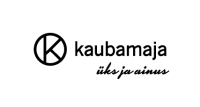Permanent exhibition. Treasury. Classics of Estonian Art from the Beginning of the 18th Century until the End of the Second World War
Location: 3rd floor, A-wing
The role of Kumu as a national gallery is to manage Estonian art classics and to ensure their relevance today via exhibitions, comparisons and contextualisation. Thus, the third floor of Kumu is dedicated to a permanent exposition that covers the art legacy of the Estonian territory from the 18th century until the end of World War II.
This display allows locals and foreign visitors to admire the most iconic and famous works by Estonian artists, and to have the chance to experience the uniqueness of local culture, to understand international links, historical contexts, and the role of art in society in different eras.
The exposition begins with the chronologically earliest art created by local German nobility and intelligentsia. The heyday of Baltic German culture and art lasted throughout the long 19th century, when Estonia was a part of the Russian Empire but was governed by the Baltic German nobility, who had great privileges and owned most of the land. Kumu’s treasures from this period include Biedermeier portraits and cityscapes (by Gerhard von Kügelgen, Karl von Kügelgen, Carl Sigismund Walther, August Georg Pezold, Ernst Hermann Schlichting, Gustav Adolf Hippius and others), academic art by the Baltic Germans who became successful in Saint Petersburg (e.g. Otto Friedrich Moeller, Carl Timoleon von Neff and Julie Hagen-Schwarz), as well as realistic works of the professors and students of Estonian origin of the Arts Academy Düsseldorf (Eduard von Gebhardt, Eugen Dücker, Oskar Hoffmann and others).
Gallery
At the time of the National Awakening in the second half of the 19th century, the first Estonian-born artists, such as the painter Johann Köler and sculptors August Weizenberg and Amandus Adamson, entered the scene. We can also talk about Estonian national art history and its developments, such as the symbiosis of the National Romantic style and Symbolism in the first decades of the 20th century, when many artists found inspiration in the national epic Kalevipoeg (Kristjan Raud, Oskar Kallis and others), the popularity of international modernist movements (the sculptor Jaan Koort, and the painters Nikolai Triik and Konrad Mägi), the establishment of the Pallas Art School, which was an extremely significant event in local art life, the introduction of expressionism and decadence (by Ado Vabbe, Eduard Wiiralt and others), the constructivist Group of Estonian Artists (Märt Laarman, Arnold Akberg and others), New Objectivity (the Mei sisters, Eduard Ole and others) and the late Impressionism of the 1930s (e.g. Aleksander Vardi and Karl Pärsimägi). The exposition extends to World War II, when artists had to face the new political situation, wartime drama and leaving their homeland.
The permanent exposition is sometimes extended by displays in the temporary exhibition wing on the third floor. Over the years, Kumu has presented many viewpoints and approaches to Estonian art through exhibitions sometimes focusing on a phenomenon, and at other times on an artist or group of artists. In 2019–2020, Kumu has focused on female artists and women depicted in art in the exhibition Creating the Self: Emancipating Women in Estonian and Finnish Art (curators Anu Allas and Tiina Abel). Temporary exhibitions add to the permanent display and shed new light on Estonian art history, which has undoubtedly been shaped to a great extent by the Kumu Art Museum.
Author of the text: Kadi Polli, Director of Kumu






















